Everything You Need to Know about Voice Conversational AI
- 1: What Is Voice Conversational AI?
- 2: How Does Voice Conversational AI Work?
- 3: The 5 Best Voice Conversational AI Chatbots
- 4: How to Implement Conversational Voice AI?
- 5: Where Can People Use Voice Conversation AI?
- 6: Pros and Cons of Voice Conversational AI
- 7: Challenges of Voice Conversational AI
- 8: Voice Conversational AI vs Chatbot
- 9: Final Words - The Future of Conversational AI
What Is Voice Conversational AI?
Conversational AI is a piece of computer software that understands, processes and generates human language, simulating the actual human conversation. It uses machine learning technology to reply intelligently and learn more as it converses.
The voice conversational AI is like a chatbot or an assistant but an intelligent one that can mimic the actual human conversation, so you can talk with these AI voice chatbots and be replied by the conversational AI voice.

How Does Voice Conversation AI Work?
Voice-based conversational AI, aka voice AI chatbots, are the extended form textual chatbots. Similar to chatbots, voice conversational AI also utilizes machine learning algorithms, natural language processing, automated speech recognition, and advanced dialog management to process and respond to voice conversations and improve with every dialog.
Where chatbots are trained on a large set of textual data, voice bots are fed audio data. This allows them to not only process voice prompts but also respond to those voice prompts.
Some of these voice bots are developed to replicate the speaker's voice. In that case, such conversational AIs listen to the speaker's voice for a defined period of time, and after that, they can generate an exact replica of that voice. The purpose of these voice conversational AIs highly depend on their trained data and the type of AI technologies utilized to build these voice bots.
The 5 Best Voice Conversational AI Chatbots
It is inevitable to use or experience the voice conversational AI chatbots in our daily life, and some voice AI chatbots stand out for providing the best experience.
1Mindsay
As one of the best conversational ai chatbots, Mindsay is a no-code voice conversational AI that is built to handle thousands of use cases and complex requests.

Pros
- The platform is particularly geared towards businesses to provide a better customer experience, stay ahead of the competition, and generate more profit.
- You will get all the tools that you need via the chatbot builder tool offered by Mindsay.
- You can build AI business solutions that are highly customized and meet your exact requirements.
- Being a Software-as-a-Service solution, Mindsay is not platform-specific, allowing deployment.
Cons
- You are required to have some technical skills.
- Mindsay can be unresponsive sometimes.
- The layout choices can be limited in terms of user experience.
User Review:
"The chatbot enables us to help clients in 4 languages, either in redirecting the clients to our websites content, creating cases or managing a live chat with agents." - By Céline
2Floatbot
Similar to Mindsay AI, Floatbot is also a Software-as-a-Service platform that offers chatbot and voice bot services. Having a business-oriented approach, Floatbot helps businesses increase their productivity, growth, and revenue, and it has a strong reputation in the chatbot and voice bot market and millions of customers.
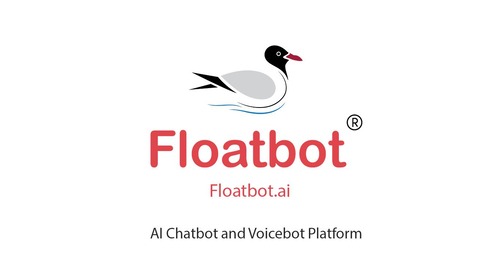
Pros
- Businesses can use Floatbot to develop a highly customized version of voice bot that suit their business needs.
- Its self-learning algorithms improve over time as they continue to understand business.
- It inherits the power of ChatGPT.
Cons
- Floatbot is not well-suited to integrating with third-party tools.
- It is limited in terms of analytics reports.
User Review:
"Although we were optimistic about Floatbot even while implementing it, it turned out far better than our expectations, especially its accuracy. We were impressed when we witnessed the Chatbot managing moderately complex conversations by itself." - By Bhavik M.
3Amazon Lex
Amazon Lex allows developers to deploy conversational interfaces for different apps via conversational AI. It is a good choice for businesses which are looking to build virtual agents and voice assistants to automate their customer services.
Furthermore, Amazon Lex is a part of Amazon Web Services which you can use with the AWS suite as a whole or as a stand-alone service.
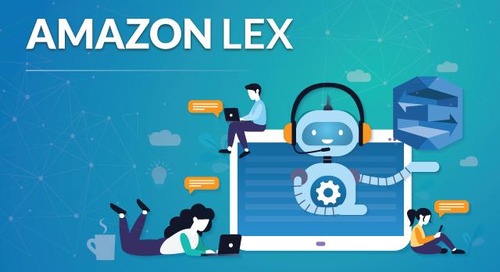
Pros
- It is powered by Amazon's AI algorithms and extensive resources.
- Quality speech recognition and processing are natural language understanding.
- It comes with seamless integration with other AWS services.
Cons
- The user interface is less-easy to use.
- No support for multiple languages.
User Review:
"Compared to q and a chat bots, this is the best. We need to integrate with aws lambda and add utterences and intents." - By uday t.
4LumenVox
At its core, LumenVox is a market-leading speech recognition company. LumenVox has around 20 years of experience in dealing with voice processing. On Aug 3, 2021, LumenVox launched their AI and ML-integrated Automatic Speech Recognition Engine. You, as a business owner, can incorporate LumenVox's next-gen speech recognition to automate your customer care department as well as its telephony services.

Pros
- Highly flexible in terms of deployment, capabilities, and monetization perspective.
- It provides highly optimized voice automation and interaction solutions.
- It can handle both simple commands and complex queries.
Cons
- It may not be the right solution for all businesses.
- Being a telephone service at its core, it might require some additional procedures for implementing its voice bot service.
User Review:
"Make it an easier task for the speech recognition soft over the time the imp in its diagnostics feature has increased its effectiveness." - By Girish B.
5AI Rudder
AI Rudder is on a mission to provide leading AI voice bot services to improve the scale, quality, and speed of customer experience of businesses by incorporating AI. AI Rudder is highly focused on customer care support and allows businesses to handle bulk customer queries and data collection. As a business owner you can delegate no-risk tasks to AI Rudder and spare your workforce for management tasks.
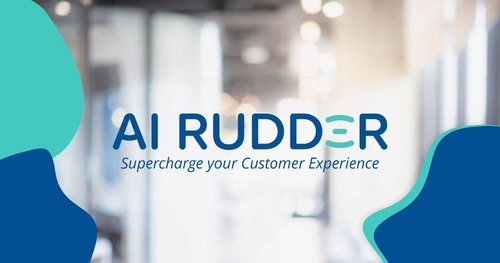
Pros
- AI Rudder has a strong track record of delivering quality services in domains like banking, finance, insurance, retail, supply chain, and more.
- Improved customer experience and sales.
- Reduced risks and errors.
Cons
- Lacks AI insights.
- No omni-channel support.
User Review:
"With humans, we have many limitations to reach our debtors (such as different working hours and time zones), with AIrudder we can reach our debtors more and in an easy way." - By Erwin S.
How to Implement Voice Conversational AI?
The deployment of voice conversational AI requires a number of technologies and processes. Here is a general approach to how one can implement their own variation of voice conversational AI.
Define Your Target Audience
Before beginning, you should be clear about your target audience, what will be its purpose and what sort of users you will be dealing with. It is especially necessary for building the voice bot that you get to know what sort of language your audience speaks, what is their style of communication, what are common words in their linguistics, what about their tone, and the list continues.

Content
Then comes the requirement that what type of data you will be feeding to your AI voice bot. It is essential that you train your AI model on the right data so that it will serve the correct purpose.
Also it is essential that you gather the appropriate amount of data. It is crucial because it will determine the effectiveness of the output that your voice bot will generate.
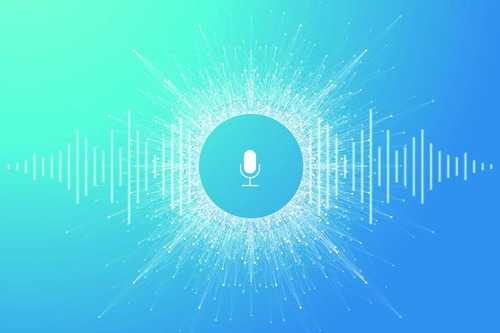
Underlying Technologies
Then you should decide about the AI technologies and models that you will be selecting to go along. As mentioned above, there is a large set of technologies and machine learning models that are being used in the industry for AI implementation.
Since you will be deploying a voice conversational AI, here are some commonly used technologies:
- Automatic Speech Recognition to understand human voice inputs.
- Natural Language Processing to process voice input and generate appropriate responses.
- Advanced Dialog Management to manage complex conversations.
- Machine Learning enables models to learn from the conversation and improve over time.
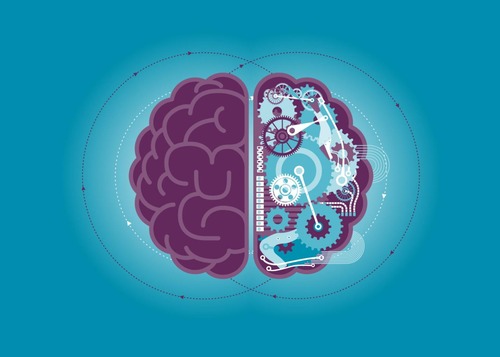
Integration and Personalization
Now if you are building the voice bot for business purposes, you should decide how it will integrate into your already deployed ecosystem. You can maximize your benefits by integrating your trained voice bot only appropriately. You should highlight the domains where you want to integrate your voice bot and where you want to see the voice bot shine.

Where Can People Use Voice Conversational AI Chatbots?
Voice conversational AI has limitless applications and can be implemented pretty much anywhere, where there is a need for quick and efficient communication. It can be a very handy tool not only in everyday life but also in the business world. Followings are a few popular applications of voice conversational AIs.
Customer Care Centers
You can implement AI chatbots with a voice into your business models for handling day to day customer queries. These conversational voice bots can be very efficient in timely responding, saving you resources to do other business operations.

Personal Assistants
You have probably heard of Amazon Alexa, and Apple's Siri. These are personal assistants, but they are not integrated with modern AI technologies. You can think of your personal assistant to be a more capable version of Alexa or Siri that can not only learn about you from your conversation but will also be more accurate with its responses.
Education
These voice bots can also be very useful in academics. You can implement a voice bot to tutor students and guide them with some common problems.
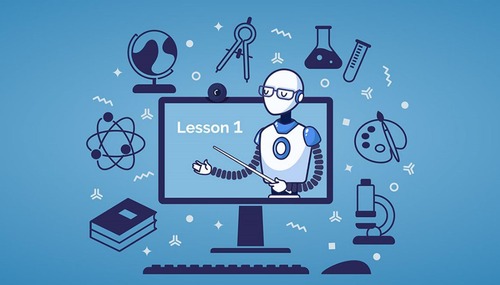
Pros and Cons of Voice Conversational AI
Now we will discuss the advantages and disadvantages of AI conversational chatbots with voice.
Pros
- Conversational AI can be a very great tool for helping people interact with complex systems faster and easier.
- Businesses can handle bulk customer queries and respond to them with minimal errors for improved customer experience and to build brand reputation.
- AI voice assistants trained for multi-language support can be a very cost-effective channel for handling customers from different regions.
- AI voice bots do not burn out as humans; hence they can be a very effective channel for gathering customers' data with detailed analytics.
- By incorporating voice conversational AI into businesses, organizations can better utilize their human resources.
Cons
- No matter how effective AI would become, at the end of the day they are not humans ,and the customers who feel comfortable with dealing with real humans will not be satisfied with automated replies.
- Organizations and individuals have to trust the companies behind the voice bots with their personal data, and not everyone is willing to do so.
- Voice bots are only effective when dealing with simple queries and might not be best suited to handling complex prompts.
- Most of these voice bots require technical knowledge for appropriate integration into your business ecosystem and businesses might require to hire additional individuals to not only deploy these voice bot solutions but also to manage them over time.
Challenges of Voice Conversation AI

Although voice conversational AIs sound very promising and can facilitate business operations, there are a number of challenges that these voice bots face. Down below are a few of them in no specific order.
- Being machines, these AI voice bots largely struggle while understand and process human emotions.
- While dealing with multiple users, these voice bots can have a difficult time understanding the prompter to differentiate between different communications.
- These voice bots utilize machine learning algorithms which are not perfect initially but improve their effectiveness by learning over time. And during this period, they can generate some wrong or misinformation.
Voice Conversational AI vs Chatbot

Even though, voice bots are the subset of voice bots, both technologies have some differences. Some key differences include:
1. Voice conversational AI deals with voice inputs or responds to voice outputs compared to chatbots, which offer textual-based communication.
2. Voice bots can process or speak different languages while chatbots only write in multiple languages.
3. Voice bots use an Automatic Speech Recognition system to understand user inputs, while chatbots have no such support for speech recognition.
4. Chatbots are usually intended for home users, while voice bot solutions are the most popular in the business domain.
5. Chatbots are also required to have a conversational UI, while voice bots can function perfectly even without having an interface.
6. Chatbots don't require much language processing-related training, while voice bots require deep training related to human conversation including speaking style, tone, grammar and much more.
7. Chatbots' training data will be much smaller than voice bots training data as textual data takes lesser bytes compared to voice data.
Final words - The Future of Conversational AI
AI is a highly trending field and is expected to grow much more in the upcoming future. More and more AI products are being introduced to the market and businesses have their radar on alert. The benefits of these voice bots are real and several businesses have already jumped on the bandwagon to see where it rolls.








Leave a Reply.